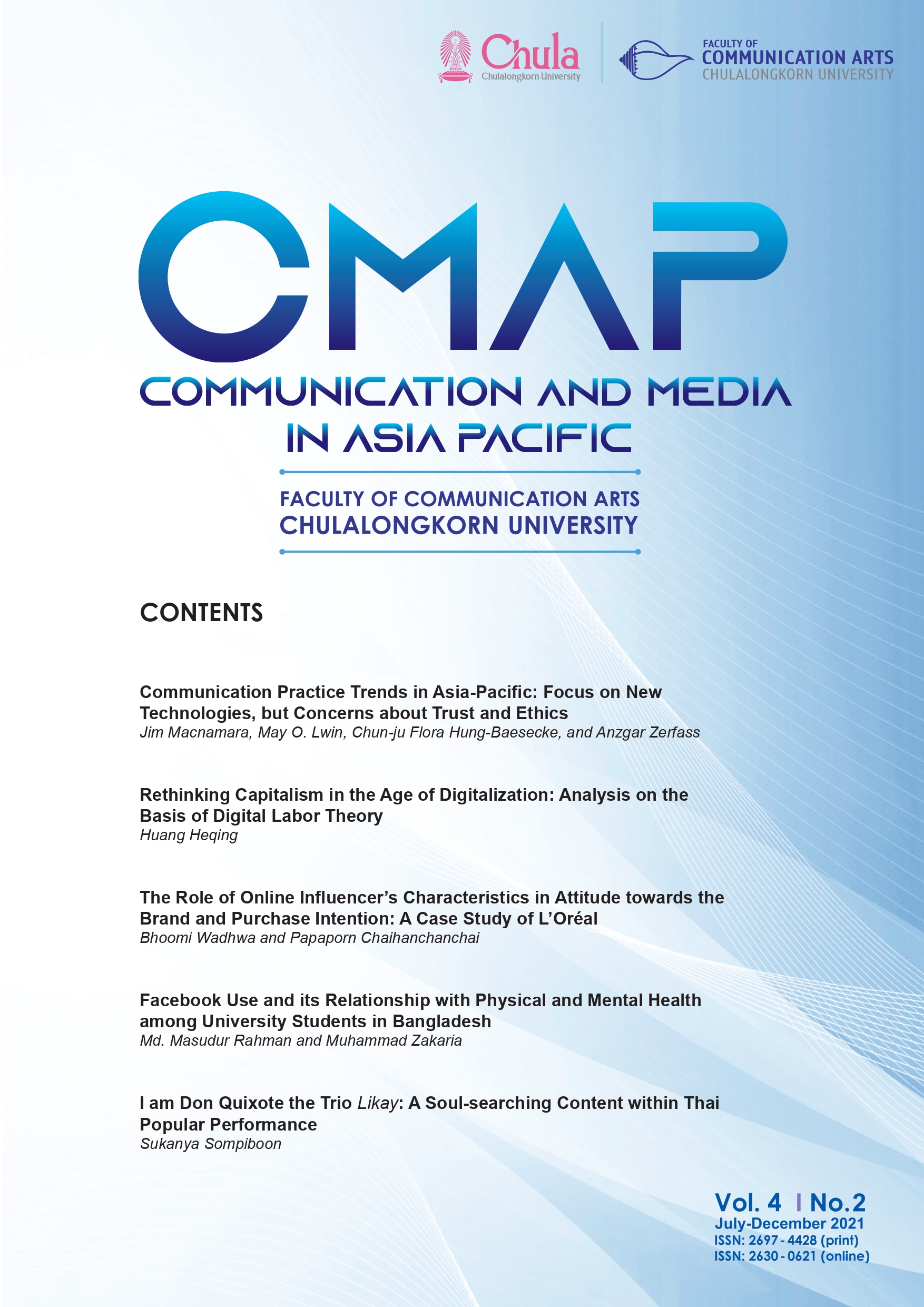I am Don Quixote the Trio Likay: A Soul-searching Content within Thai Popular Performance
Main Article Content
Abstract
This article mainly focuses on the recent production of Anatta Theatre Troupe, named “I am Don Quixote the Trio Likay,” which presented in Bangkok Theatre Festival 2019. The performance exhibited the combination of social themes and entertaining images belong to both Don Quixote of La Mancha and likay form as a reconstruction of popular theatre. The story is about a broke business man who assumes himself as a world-renowned knight, Don Quixote of La Mancha, in likay style. He makes the great efforts in promoting justice and equality for underprivileged people in Thai society. The production demonstrates a confidence in presenting identity of popular theatre and challenging Thai socio-cultural formation of popular status. The result demonstrates that sophisticated messages, such as soul-searching, social critique and satire, humanity and equality can, in an apparently paradoxical manner, be conveyed through likay-style performance. “I am Don Quixote the Trio Likay”, therefore, enables to hybrid the theatrical practice between tradition-popular based and contemporary theatre in Thailand.
Article Details
References
Barber, R. H. (2007). Performing praxis, community culture, and neo-traditionism: A study of Thailand’s Makhampom Theatre Group (Unpublished doctoral dissertation). Monash University, Australia.
Bates, S. & Ferri, A. J. (2010). What’s entertainment? Notes toward a definition. Studies in Popular Culture, 33(1), 1-20.
Cornwel-Smith, P. (2005). Very Thai: Everyday popular culture. Bangkok, Thailand: River Books.
Eoseewong, N. (1995). Khon, Carabao, Namnao,and Nangthai [Khon, Carabao, Still Water and Thai Movies]. Bangkok, Thailand: Matichon.
Ferguson, K. (2007). The politics of judgment: Aesthetics, identity, and political theory. Plymouth, UK: Lexington Books.
Mckee, A., Collis, C., Nitins, T., Ryan, M., Harrington, S., Duncan, B., Carter, J., Luck, E., Neale, L., Butler, D., & Backstrom, M. (2014). Defining entertainment: An approach. Creative Industries Journal, 7(2), 108-120.
Nagavajara, C. (1996). Comparative literature from a Thai perspective: Collected articles 1978-1992. Bangkok, Thailand: Chulalongkorn University.
Pronko, L. C. (1967). Theater East and West: Perspectives toward a total theater. Berkeley, CA: University of California Press.
Reynolds, C. J. (2002). Introduction: national identity and its defenders. In C. J. Reynolds (Ed.). National identity and its defenders: Thailand today (pp. 1-32). Chiang Mai, Thailand: Silkworm Books.
Schechter, J. (2003). Back to the popular source: Introduction to part I. In J. Schechter (Ed.). Popular theatre: A source book (pp. 3-11). New York, NY: Routledge.
Scolari, C. A. (2014). Don Quixote of La Mancha: Transmedia storytelling in the grey zone. International Journal of Communication, 8, 2382-2405.
Shusterman, R. (2003). Entertainment: A question for aesthetics. British Journal of Aesthetics, 43(3), 289-307.
Sompiboon, S. (2012). The reinvention of Thai traditional-popular theatre: Contemporary likay praxis (Unpublished doctoral dissertation). University of Exeter, UK.
Tungtang, P. (2015). Yes, we fully realize that we're watching a play. We just don't realize that it's brecht: An analysis of Brecht's V-effect technique used in Thai likay theater. Journal of Humanities and Social Sciences, 32(2), 12-58.


